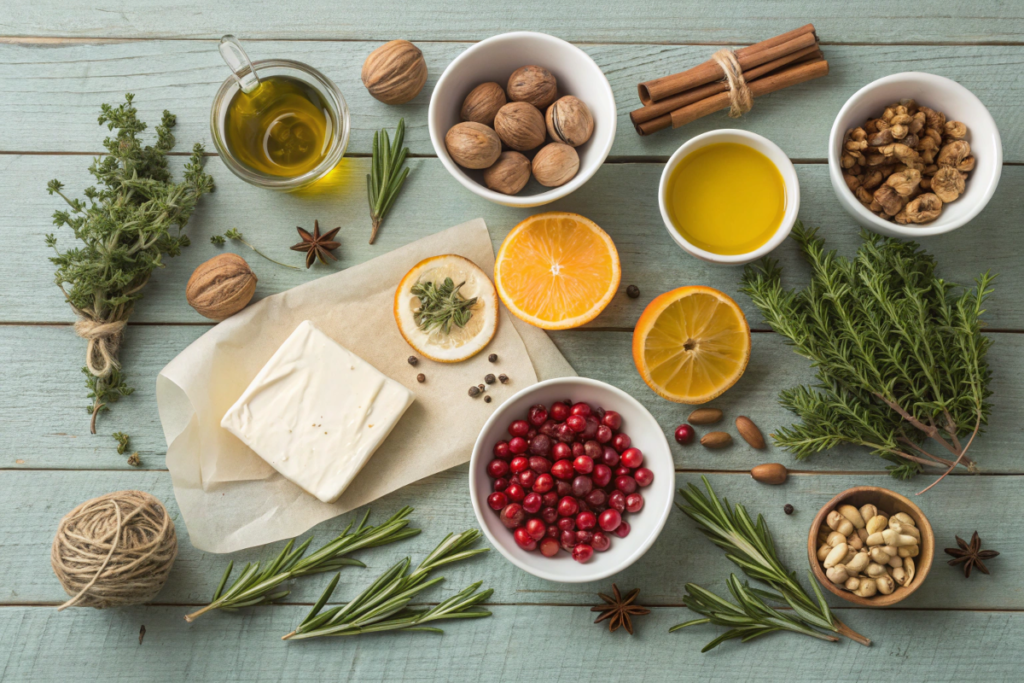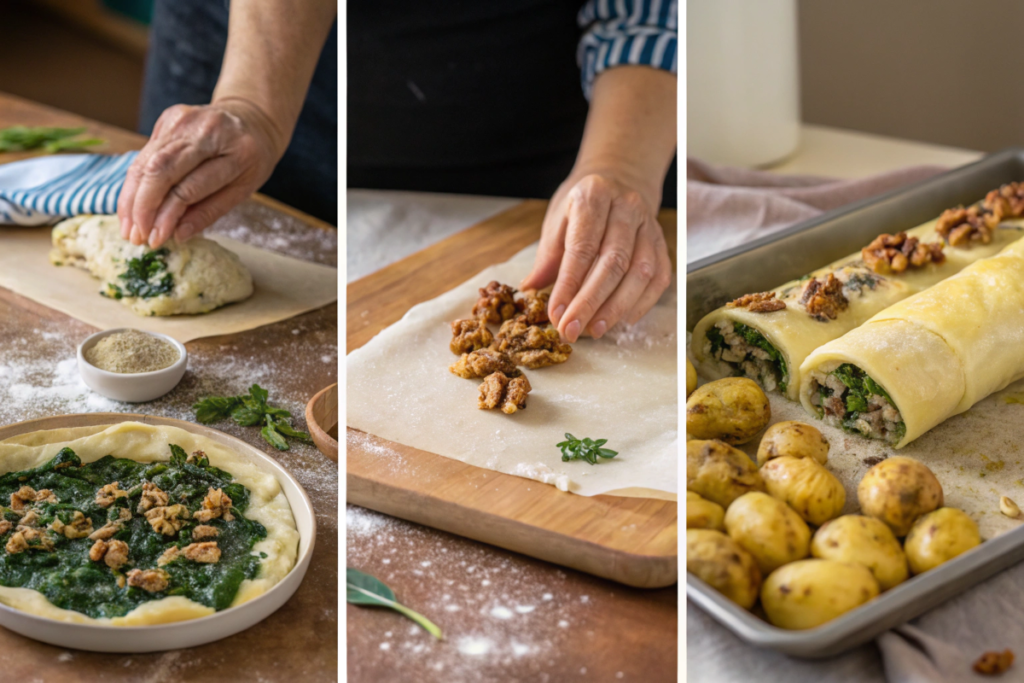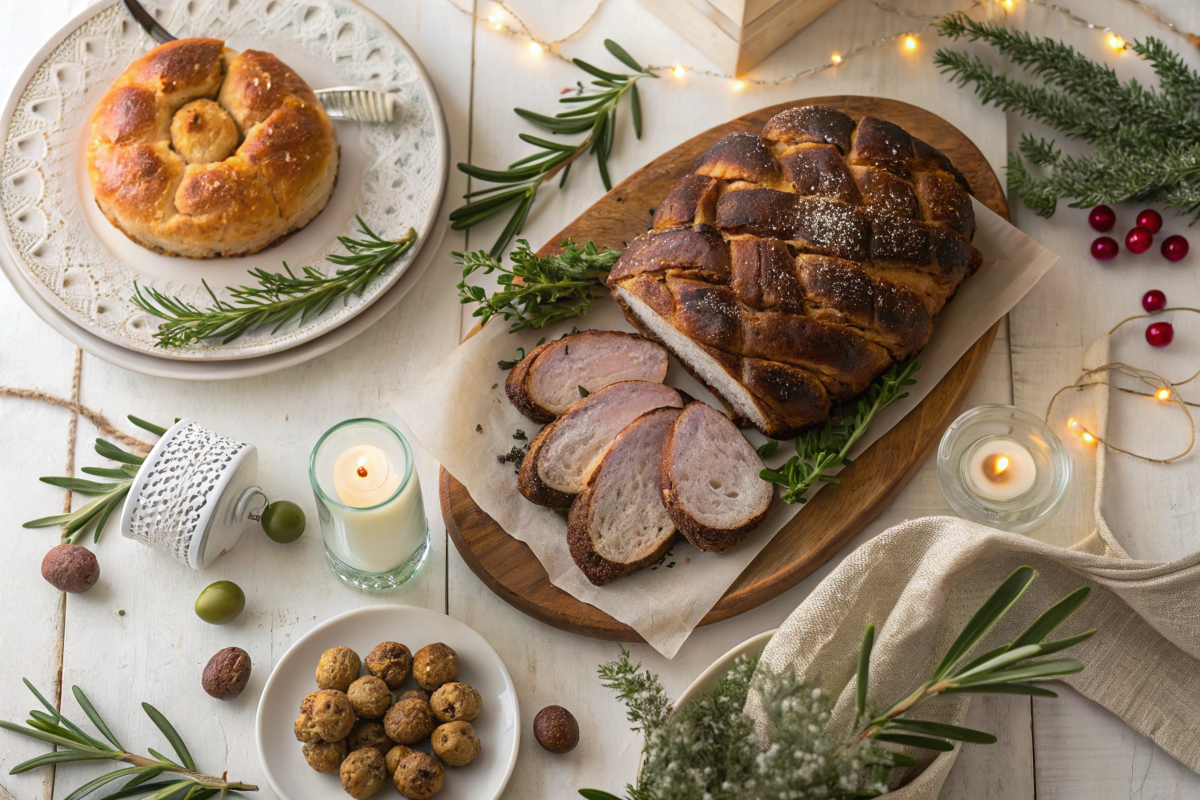Historical Significance of Greek Christmas Traditions
A Greek holiday feast mixes faith, family, and history. Many travelers ask, What is a traditional Greek Christmas dinner?, hoping to taste these centuries-old traditions. Exploring Greek Christmas recipes reveals the deep ties between religion and ancient customs. For a comparison of festive traditions, you can also explore the Traditional Italian Christmas Dinner Menu for inspiration.
Origins of Christmas Festivities in Greece
Religion plays a major role in Christmas food in Greece. Most families attend midnight Mass, then return home to share a meal. These customs link to early Christian influences and ancient Greek solstice festivals. Over time, the church guided what people eat and how they gather, but hints of older pagan elements still appear. Families might chant carols or set out treats for the Kalikantzaroi (mischievous goblins).
Ingredients like olive oil and herbs reflect Hellenic roots, while using blessed bread shows religious practices. This mix explains why authentic Greek holiday cuisine fascinates many visitors. People light candles, dance around the table, and blend sacred and secular elements in a joyful Greek holiday feast.
Symbolism in Greek Christmas Cuisine
Symbolism enriches Greek holiday dishes. Bread often represents prosperity, honey adds sweetness for the year ahead, and olive oil signifies health. Many Greek Christmas recipes feature these items to give each bite deeper meaning. Christopsomo (Christ’s Bread) might display crosses or decorative patterns that bring blessings to the home. By weaving symbolic ingredients into a traditional Greek festive meal, families continue customs passed down through generations.
Preparations for a Greek Christmas Feast
Holiday meals in Greece revolve around fresh produce, fragrant spices, and togetherness. These elements shape what is a traditional Greek Christmas dinner, merging practical needs with spiritual significance. Many dishes grace the holiday table, but the main goal is to celebrate blessings and look forward to the future.
Seasonal Ingredients Used in Greek Dishes
Local, in-season foods add depth to authentic Greek holiday cuisine. Citrus delivers brightness, nuts give a hearty crunch, and spices like cinnamon create warmth. These flavors mirror Greece’s mild climate, where fresh produce remains abundant. Incorporating them in a Greek holiday feast honors both the land and longstanding customs. For instance, orange zest in desserts or stuffing highlights high-quality Greek citrus. Traditional baked goods often use honey and cinnamon to blend natural sweetness with aromatic depth.

Kitchen Rituals and Family Involvement
Every traditional Greek festive meal is a group effort. Parents, grandparents, and children gather in the kitchen, passing down recipes through stories and hands-on practice. This communal spirit tightens family bonds and preserves cultural knowledge. Inviting young cooks to knead dough or stir sauces teaches them the value of Greek Christmas recipes. These moments also show that Christmas food in Greece is about more than taste. It connects generations, whether they’re layering pitas or decorating honey cookies. Working together keeps authentic Greek holiday cuisine alive for years to come.
The Key Components of a Greek Christmas Dinner
What is a traditional Greek Christmas dinner? It’s a traditional Greek festive meal filled with hearty dishes, savory pies, and aromatic spices. The table brims with variety, highlighting the bounty of Christmas food in Greece. Each item reflects centuries of Greek holiday feast traditions passed down through families. By mixing classic elements with modern twists, home cooks keep the spirit of authentic Greek holiday cuisine alive year after year.
Appetizers: Meze Platters
Greek meals often begin with meze, small plates that awaken the palate. Spanakopita (spinach pie) and tiropita (cheese pie) reign supreme among Greek Christmas recipes. Layers of flaky phyllo wrap around spinach, cheese, or a blend of both, creating a flaky, satisfying bite. Served alongside olives, feta, or marinated vegetables, these pies set the stage for a Greek holiday feast that focuses on fresh ingredients and bold flavors.
Traditional Main Dishes
Many families enjoy roast lamb or pork for their traditional Greek festive meal. The meat cooks slowly with olive oil and herbs, delivering tender bites and a golden crust. Roasted potatoes, often seasoned with lemon and oregano, complement these main courses. Avgolemono soup, a mix of chicken broth, rice, and egg-lemon sauce, is another favorite. This silky soup provides a comforting contrast to the richness of roasted meats, showcasing the wide range of Christmas food in Greece.
Side Dishes That Complement the Meal
Greens, salads, and classic dips round out the feast. Tzatziki, a creamy cucumber-garlic yogurt dip, pairs well with meat or bread. Skordalia, a garlicky spread made with potatoes or bread, adds a sharp tang. These sides bring color and freshness to the table, balancing the heavier courses and illustrating the diversity in authentic Greek holiday cuisine.
Greek Christmas Desserts
Sweet treats mark the finale of any traditional Greek festive meal. No Greek holiday feast feels complete without a plate of cookies or pastries on display. Dessert time also answers another aspect of what is a traditional Greek Christmas dinner?—it’s about indulging in homemade confections that reflect both family history and local customs.
Melomakarona and Kourabiedes
Melomakarona are honey-soaked cookies made with cinnamon, orange zest, and crushed walnuts. Their sweet, moist texture showcases the warmth of Greek Christmas recipes. Kourabiedes, by contrast, are buttery cookies dusted with powdered sugar. They often include almonds for an added crunch. Together, these two classics exemplify Christmas food in Greece, bringing sweet cheer to any holiday gathering.
Vasilopita: The New Year’s Cake
Vasilopita is technically for New Year’s, but it remains linked to the holiday season. Families cut the cake at midnight, hoping to find the hidden coin baked inside. Whoever gets the coin is said to have good fortune for the year ahead. This practice adds another layer of tradition to authentic Greek holiday cuisine, bridging Christmas and the New Year in one special slice of sweetness.
Other Sweet Treats
Diples, baklava, and loukoumades round out the dessert table. Diples are thin dough sheets folded and fried, then drizzled with honey. Baklava layers phyllo with nuts and syrup, while loukoumades are small fried dough balls soaked in honey. Each dessert may differ in texture, but they all reflect the same generous spirit found in a Greek holiday feast. Whether you crave flaky, sticky, or soft sweets, these classics affirm the rich tapestry of Greek Christmas recipes shared across generations.
Festive Drinks at a Greek Christmas Table
Festive beverages play a crucial role in any Greek holiday feast. Indeed, drink choices range from bold liquors to calming herbal teas, complementing the richness of Greek Christmas recipes. Furthermore, many families see shared drinks as a way to prolong holiday cheer long after the main meal ends. Often, visitors ask, “What is a traditional Greek Christmas dinner?”, not realizing that drinks are part of the overall experience in Christmas food in Greece.
Traditional Alcoholic Beverages
Traditionally, Greeks offer ouzo, tsipouro, or retsina wine alongside their traditional Greek festive meal. In fact, ouzo’s anise flavor pairs well with savory appetizers, while tsipouro’s clear spirit can warm the body during chilly winter nights. Moreover, retsina boasts a distinctive pine-resin taste, which cuts through oily dishes and highlights the zest in authentic Greek holiday cuisine. Ultimately, these classic beverages help unify a gathering, adding a sense of camaraderie to the dinner table.
Herbal Teas and Other Non-Alcoholic Options
Additionally, many families choose herbal teas such as mountain tea (sideritis) or chamomile for a soothing finale. In contrast, some enjoy cinnamon-spiced drinks that echo the spicy notes found in certain Greek Christmas recipes. Thus, non-alcoholic choices can refresh the palate after a hearty spread. Meanwhile, these gentler flavors also welcome children and abstaining guests to partake in the joyful ambiance of a Greek holiday feast.
The Role of Religion in Greek Christmas Meals
Religion permeates many aspects of Christmas food in Greece, guiding not only what is served but also how it’s served. Consequently, holiday meals often fuse spiritual reflection with the comfort of authentic Greek holiday cuisine. Because Orthodox traditions remain central, some families follow fasting rules before indulging in a traditional Greek festive meal. Nonetheless, they celebrate with gusto once the fast ends.
Blessing the Feast
Before families begin eating, a short prayer or blessing sets a reverent tone. Indeed, these prayers thank God for the meal and honor the Christian significance of the holiday. Therefore, many view this ritual as a way to start the festivities on a humble note, reinforcing the spiritual dimension of what is a traditional Greek Christmas dinner?. Also, it reminds everyone that this season transcends mere feasting.
Connections Between Food and Orthodox Beliefs
Often, believers spend weeks leading up to Christmas following a disciplined fast. As a result, the sudden availability of meat and dairy makes the holiday meal feel extra special. Moreover, the dishes reflect gratitude for blessings received throughout the year. By breaking the fast with a Greek holiday feast, families intertwine faith and flavor, reaffirming that Greek Christmas recipes serve not just the body but the soul as well.
Regional Variations in Greek Christmas Dinners
Greek cuisine displays remarkable diversity from one region to another. Therefore, some dishes spotlight island influences, while others highlight mainland traditions. In fact, these differences make Christmas food in Greece an ever-evolving tapestry of flavors. Because geography can dictate what ingredients are available, each area creates unique twists on a traditional Greek festive meal. Yet no matter where you go, families still gather for a memorable Greek holiday feast steeped in centuries of heritage.
Island Cuisine vs. Mainland Fare
On the islands, cooks often rely on fresh seafood and locally grown produce. Consequently, their holiday tables might feature grilled fish, octopus, or other marine specialties.
Meanwhile, mainland communities tend to focus on meats like pork, lamb, or poultry as they prepare Greek Christmas recipes. Indeed, this contrast underscores the question many travelers ask: What is a traditional Greek Christmas dinner? The answer varies based on location. Even so, each region preserves the essence of authentic Greek holiday cuisine—simple, wholesome, and brimming with history.
Unique Dishes from Specific Regions
Crete stands out for its olive oil-based preparations and hearty stews. Thus, dishes like gamopilafo (a celebratory rice dish) might steal the show on festive occasions. Thessaloniki, famous for its cosmopolitan flair, offers savory pastries and sweets with Balkan or Middle Eastern notes.
On the other hand, the Peloponnese boasts oven-roasted meats and comforting casseroles. Furthermore, many local cooks include citrus, honey, or aromatic herbs that reflect each area’s natural bounty. Ultimately, these varied approaches to a traditional Greek festive meal reveal that Christmas food in Greece remains delightfully diverse yet unified by shared customs and communal spirit.

FAQs About Traditional Greek Christmas Dinner
Why is lamb so popular for Greek Christmas?
Lamb ties deeply into Orthodox customs and ancient pastoral traditions. Many families view roasted lamb as a highlight of any traditional Greek festive meal, symbolizing abundance and unity.
Its tender, flavorful meat complements other Greek Christmas recipes, making it a timeless favorite during a Greek holiday feast.
What desserts are unique to Greek Christmas?
Melomakarona and kourabiedes top the list of Christmas food in Greece. Melomakarona are honey-soaked cookies infused with orange and cinnamon, while kourabiedes are buttery delights dusted in powdered sugar.
Both treats add sweet balance to an authentic Greek holiday cuisine spread.
Can a Greek Christmas dinner be vegetarian?
Yes, you can adapt a Greek holiday feast for vegetarians. Dishes like spinach pie (spanakopita), bean stews, and roasted vegetables fit well into a traditional Greek festive meal.
By focusing on fresh produce, herbs, and dairy-free pastries, vegetarians can still enjoy Greek Christmas recipes without missing out on rich holiday flavors.
Conclusion
In conclusion, Christmas food in Greece stands as a vivid reflection of the nation’s deep cultural roots and family-centered spirit. By blending religious customs, ancient practices, and local ingredients, each Greek holiday feast becomes an opportunity to honor the past while embracing the present.
Whether you explore Greek Christmas recipes on the mainland or sample island favorites, a traditional Greek festive meal offers far more than delicious flavors—it tells a story passed down over centuries.
Ultimately, authentic Greek holiday cuisine binds relatives and neighbors together, reminding everyone of shared heritage. For anyone asking, What is a traditional Greek Christmas dinner?, the answer reveals a vibrant tradition that continues to grow and evolve with each new generation.

